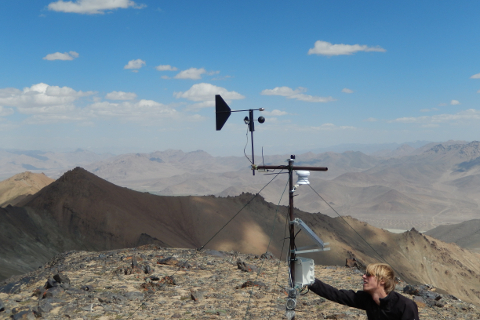Transformation Processes in the Eastern Pamirs of Tajikistan. The presence and future of energy resources in the framework of sustainable development
Project Description
Energy and other natural resources are distributed unevenly in relation to the consumption areas. It is a general feature of mountain regions that the allocated and locally exploited natural resources are of limited scope. Others are in great demand, and the exchange options with lowlands are often restricted or marginal due to a number of constraints. For resource-based mountain livelihoods the availability and accessibility of local resources is of utmost importance and - at the same time - is generating competition among different interests.

The appreciation and valuation of local resources is dependent on a number of internal and external factors that might vary significantly over time. Consequently, a strong competition between different ecosystem services exists on different levels of society and in different spatial scales. Energy consumption in high mountain regions is comparatively high and has often to be generated locally. Therefore, the energetic sector occupies a central position. In the second phase of the research project in the Eastern Pamirs, we aim at understanding the role of energetic resources as a local benefit and in relation to societal interests and economic requirements. The availability of energetic resources, their accessibility and their consumption patterns needs to be interpreted from different perspectives. Our interdisciplinary enquiry into specific natural properties of the study area and human utilization patterns are the prerequisite for appropriate modelling.
A model of energetic flows is envisaged as the basis for our understanding of present and future challenges to survival in high mountain plateau with challenging environmental conditions. In the context of the Eastern Pamirs, energy- and animal-husbandry related activities meet at crucial points of articulation. Dwarf shrubs are the main resource materials for both sectors. The in-built competition about their exploitation is a key feature in depicting future scenarios of degradation, sustainable resource utilization and/or human survival strategies at the upper limit of habitations. During our previous project activities, the interdisciplinary team was able to generate a differentiated understanding of the relationship between natural pastures, their utilization patterns and human strategies in a spatial and diachronic manner. These results form the basis for the second phase, thus enabling us to comprehend the complex web of present-day pasture potential, conflicting interests, internal and external power structures and related utilization patterns.
The second step aims to identify the variations between individual household strategies in large-scale study areas. The generated data are fed into an energetic model that will provide outcomes for the development of a holistic and sustainable pasture management.
Project Members
- Prof. Dr. Cyrus Samimi
- Research associate: Mag. rer. nat. Harald Zandler
Project Partners
- Prof. Dr. H. Kreutzmann (FU Berlin)
- Dr. L. Eltrop (University of Stuttgart)
- Dr. H.-G. Schwarz-v. Raumer (University of Stuttgart)
Financial Support
- funded by Volkswagen Foundation
